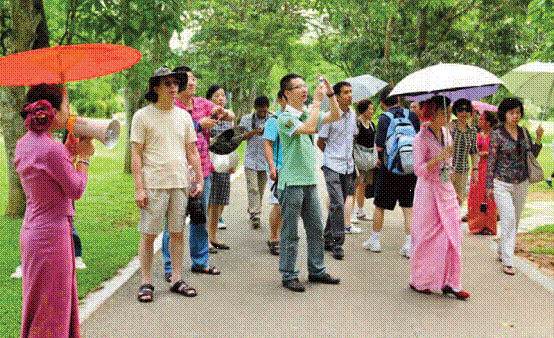Binocular vision
puts new audiences in the frame
Attracting over 600,000 visitors a year, China’s Xishuangbanna Tropical Botanical Garden faces the challenge of making plant conservation relevant to audiences old and new. Here Ximin Wang and He He describe new educational programmes introduced by the garden that are bringing an awareness of biodiversity and the relationships between plants, animals and the environment, to a wider public.
Source: http://www.bgci.org/files/Worldwide/Education/Roots_PDFs/Roots%2010:2%20.pdf

Students learning about the structure of the fig fruit during an education session
As the largest botanical garden in China focusing on tropical plant displays, research and conservation, Xishuangbanna Tropical Botanical Garden (XTBG) is visited by well over half a million people annually. Targeting and communicating our plant conservation mission to so many people– an ever-growing audience – is both an opportunity and a challenge. Currently, XTBG’s educational programmes, each with a different audience and purpose, divide into two classifications: one focusing on promoting rain forest biodiversity and ethnic culture experience for the public, the other focusing on encouraging students to carry out inquiry-based research and biodiversity conservation.
Very different from botanical gardens in nearby big cities, XTBG is located in a remote part of the country. Most visitors travel from other places in China as tourists, in groups. They come for just one visit and only spend 2–3 hours in the Garden so having a good system in place to make information accessible is very important. Besides interpretation boards and information materials, we have a well-trained team of guides made up of 50 to 60 young men and women from local communities.

Over half a million people annually visit XTBG (Xishuangbanna Tropical Botanical Garden)


